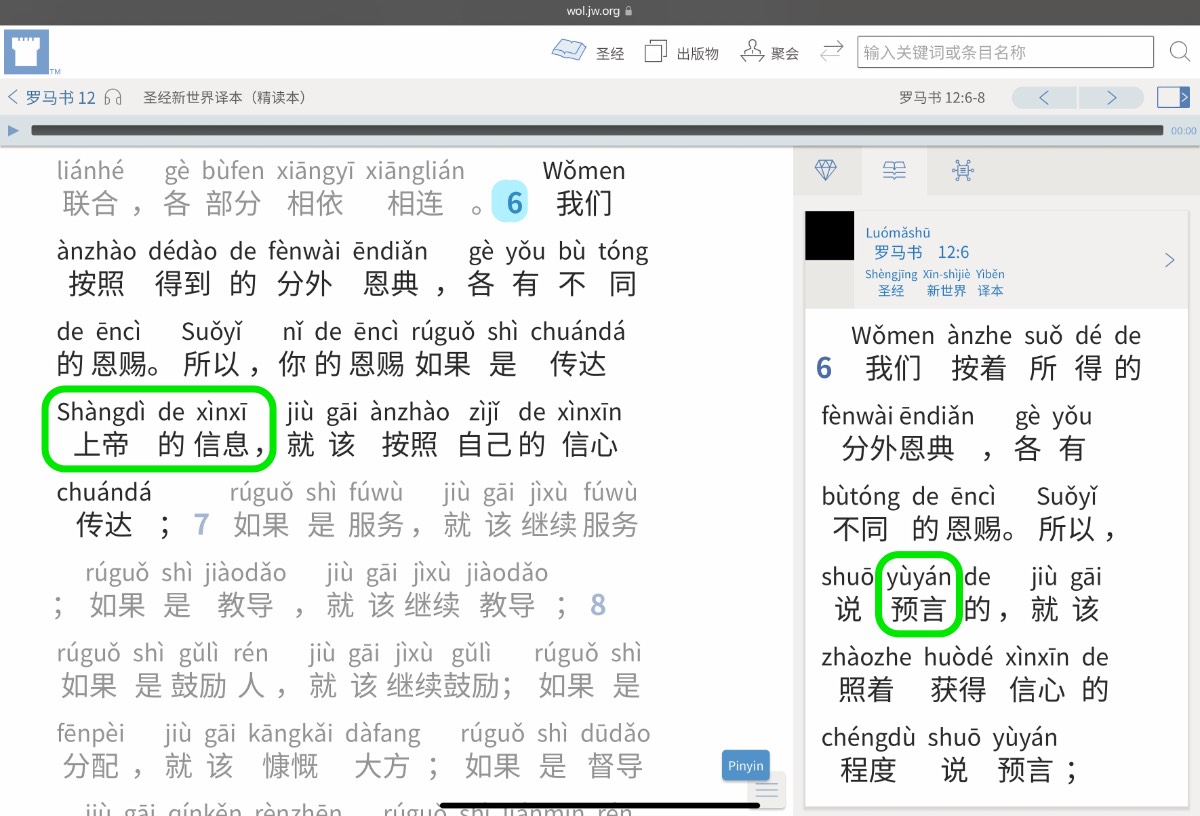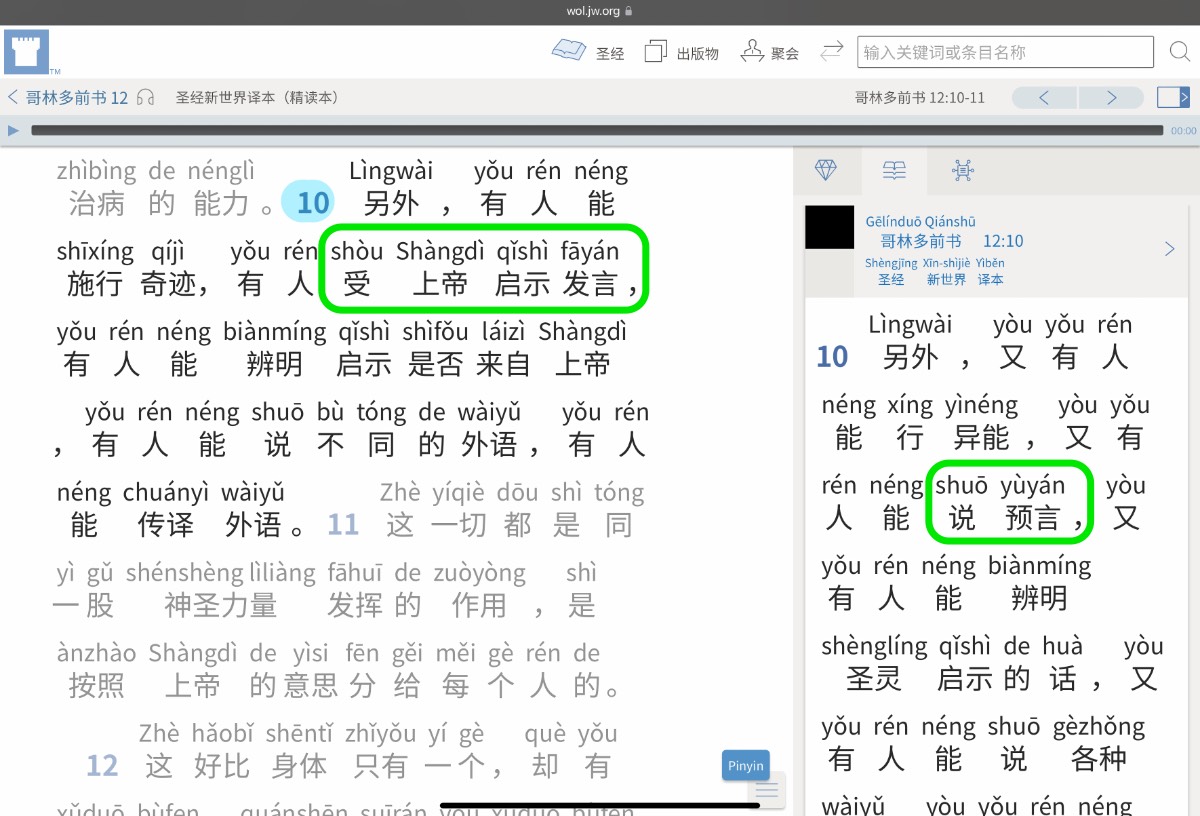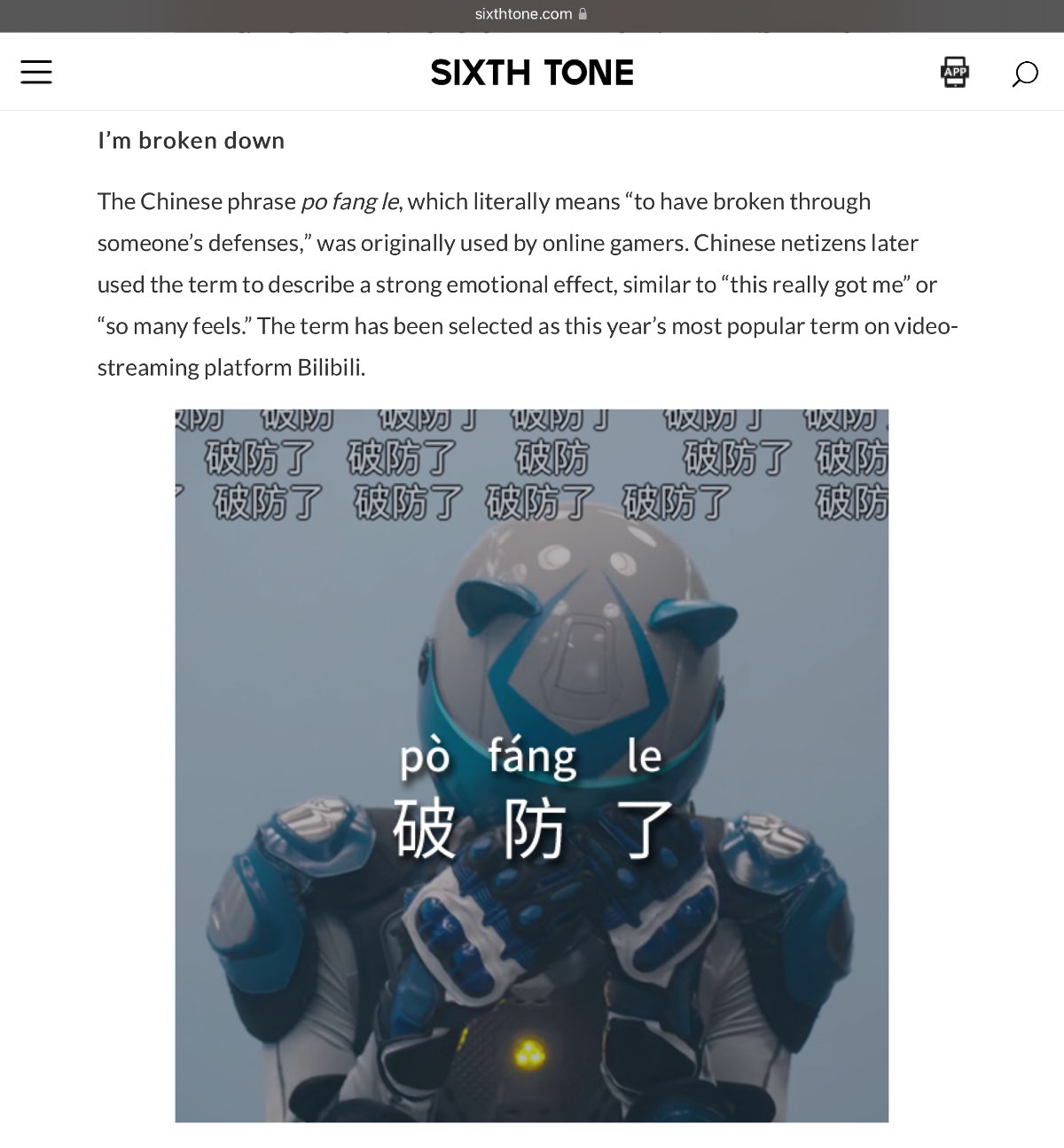kǒuzhào
(kǒu·zhào
mouth · cover → [antiseptic/surgical/breathing/etc. mask (worn over nose and mouth)]
口罩)
← Tap/click to show/hide the “flashcard”
[Note: Tap/click on a Pīnyīn
(Pīn·yīn
{Piecing Together} · Sounds → [Pinyin]
拼音) expression to reveal its “flashcard”, tap/click on a “flashcard” or its Pīnyīn
(Pīn·yīn
{Piecing Together} · Sounds → [Pinyin]
拼音) expression to hide the “flashcard”.]
As of this writing, early in the year 2022, the subject of the COVID-19 pandemic has been, to say the least, on people’s minds now for a while. So, it would be good to be able to refer to things related to it in Mandarin when speaking to people in the Mandarin field, or when speaking to our brothers and sisters in the truth.

An electron microscope image of SARS-CoV-2—also known as 2019-nCoV, the virus that causes COVID-19
 NIAID
NIAID
This week’s MEotW, “kǒuzhào
(kǒu·zhào
mouth · cover → [antiseptic/surgical/breathing/etc. mask (worn over nose and mouth)]
口罩)”, refers specifically to the kind of mask one puts on to cover one’s nose and mouth, as opposed to other kinds of masks. It pretty much has to refer specifically to this kind of mask, since, as its Pīnyīn
(Pīn·yīn
{Piecing Together} · Sounds → [Pinyin]
拼音) Plus “flashcard” information shows us, “kǒuzhào
(kǒu·zhào
mouth · cover → [antiseptic/surgical/breathing/etc. mask (worn over nose and mouth)]
口罩)” literally means “mouth cover”.
To say “wear/put on” a “kǒuzhào
(kǒu·zhào
mouth · cover → [antiseptic/surgical/breathing/etc. mask (worn over nose and mouth)]
口罩)” in Mandarin, one would say “dài
(wear; {put on}
戴)
kǒuzhào
(kǒu·zhào
mouth · cover → [antiseptic/surgical/breathing/etc. mask (worn over nose and mouth)]
口罩)”.
Rhotic (R-Like) Coda
A variant form of “kǒuzhào
(kǒu·zhào
mouth · cover → [antiseptic/surgical/breathing/etc. mask (worn over nose and mouth)]
口罩)” is “kǒuzhàor
(kǒu·zhào·r
mouth · cover · {child | youth | son → [(diminutive) non-syllabic retroflex suffix; pronunciation feature in Beijing dialect]} → [antiseptic/surgical/breathing/etc. mask (worn over nose and mouth)]
口罩儿
口罩兒)”, with an “r
({child | youth | son} → [(diminutive) non-syllabic retroflex suffix; pronunciation feature in Beijing dialect]
儿
兒)” at the end. This is an example of what in Mandarin is called “érhuà
(ér·huà
{(to have) ér} · transforming → [adding of “r” as a suffix (pronunciation feature in Beijing dialect); erization]
儿化
兒化)”. Wikipedia summarizes this thusly:
Erhua (simplified Chinese: 儿化; traditional Chinese: 兒化; pinyin: érhuà [ɚ˧˥xwä˥˩]); also called erization or rhotacization of syllable finals[source]) refers to a phonological process that adds r-coloring or the “er” (注音:ㄦ, common words: 耳、尔、儿[source]) sound (transcribed in IPA as [ɚ]) to syllables in spoken Mandarin Chinese. Erhuayin (simplified Chinese: 儿化音; traditional Chinese: 兒化音; pinyin: érhuàyīn) is the pronunciation of “er” after rhotacization of syllable finals.
It is most common in the speech varieties of North China, especially in the Beijing dialect, as a diminutive suffix for nouns, though some dialects also use it for other grammatical purposes. The Standard Chinese spoken in government-produced educational and examination recordings features erhua to some extent, as in 哪儿 nǎr (“where”), 一点儿 yìdiǎnr (“a little”), and 好玩儿 hǎowánr (“fun”). Colloquial speech in many northern dialects has more extensive erhua than the standardized language. Southwestern Mandarin dialects such as those of Chongqing and Chengdu also have erhua. By contrast, many Southern Chinese who speak non-Mandarin dialects may have difficulty pronouncing the sound or may simply prefer not to pronounce it, and usually avoid words with erhua when speaking Standard Chinese; for example, the three examples listed above may be replaced with the synonyms 哪里 nǎlǐ, 一点 yìdiǎn, 好玩 hǎowán. Furthermore, Erhua’s presence in Guoyu (國語) in Taiwan is diminishing and it is often not used at all.[source][source]
Also, the excellent Chinese Pronunciation Wiki has a page on “r
({child | youth | son} → [(diminutive) non-syllabic retroflex suffix; pronunciation feature in Beijing dialect]
儿
兒)”, which points out that the Mandarin “r
({child | youth | son} → [(diminutive) non-syllabic retroflex suffix; pronunciation feature in Beijing dialect]
儿
兒)” is different from the “r” in English. It additionally goes into technical detail about how to use your mouth and tongue to correctly make the Mandarin “r
({child | youth | son} → [(diminutive) non-syllabic retroflex suffix; pronunciation feature in Beijing dialect]
儿
兒)” sound.
Western Worldy Politicization
It’s interesting to note how differently many people with an Eastern cultural background view the wearing of masks to help reduce the risk of catching or spreading COVID-19, compared to how some with a Western cultural background view it. One article that I found while researching this post, “Why East Asians Were Wearing Masks Long Before COVID-19”, summarized the situation this way:
Masking up is second nature to East Asian immigrants like Cho. But others haven’t taken so easily to the U.S. Centers for Disease Control and Prevention’s recommendation to wear a facial covering. The guidelines have incited a nationwide feud about public health and civil liberties. Some Americans refuse to wear masks, claiming its contrary to their personal freedom. The most strident in the anti-mask movement have called them “unconstitutional,” “autocratic” and “muzzles.”
Meanwhile, in East Asian countries, the majority of the public adapted quickly to mask-wearing (or were already wearing them to begin with) ― something experts believe has contributed to lower COVID-19 death rates.
The article also goes into the long history in Asia of using masks to combat the spread of disease, a history that stretches back past the 2002–2004 SARS outbreak to at least the Great Manchurian Plague of 1910–1911.
Interestingly, the article points out who is considered to be the inventor of the anti-epidemic mask:
The invention of the anti-epidemic mask was attributed to Dr. Wu Lien-teh, a Cambridge-educated Chinese physician who led anti-plague operations on behalf of China in the region [during the Great Manchurian Plague of 1910–1911].
Balance and Subjection to the Superior Authorities
Eastern culture can sometimes go too far in prioritizing the collective at the expense of the individual, and Western culture can sometimes go too far in prioritizing the individual at the expense of everyone else, such that in such cases Eastern and Western cultures end up just being different ways for humans to get things wrong. In contrast, as Jehovah God tells us in the Bible:
“For as the heavens are higher than the earth,
So my ways are higher than your ways
And my thoughts than your thoughts.
—Isaiah 55:9.
Thankfully, as Jehovah’s people, we have balanced and wise direction from his Word and his organization that help us to rise above the ways and thoughts of imperfect humans living in Satan’s world. For example:
Jehovah’s Witnesses cooperate with public health officials. For example, since the COVID-19 pandemic broke out, Jehovah’s Witnesses have continued to publish reminders in hundreds of languages on this website, encouraging adherence to local safety guidelines. These include the importance of physical distancing and of following regulations on public gatherings, quarantining, hand washing, and the wearing of face coverings as well as other practical measures required or recommended by the authorities.—Romans 13:1, 2.
—“Are Jehovah’s Witnesses Opposed to Vaccination?” (article on jw.org)



